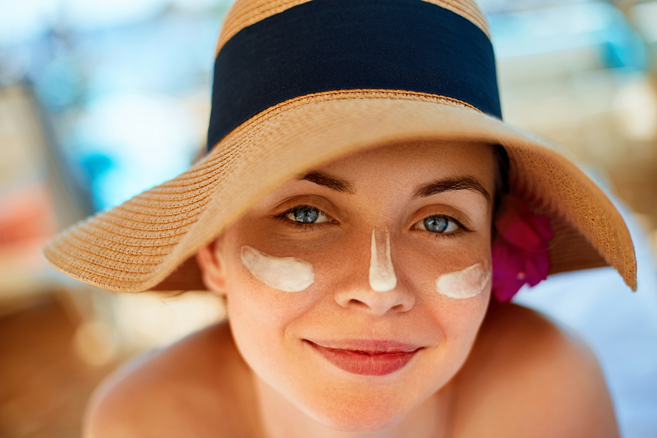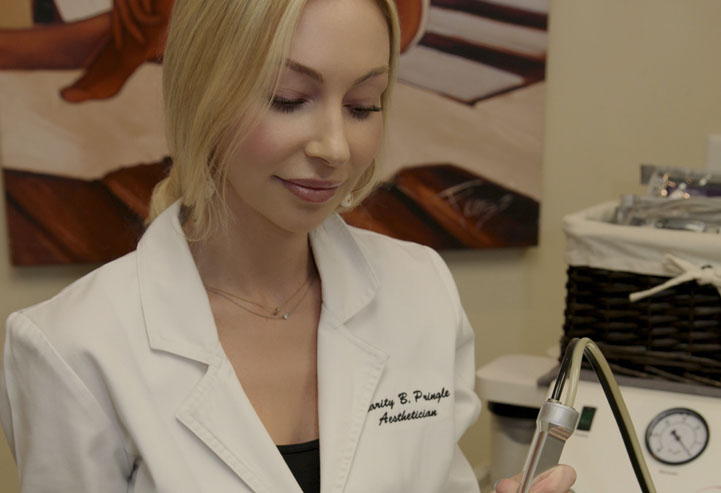7 Summer Skin Problems You Can Treat Into Fall
Summer is the quintessential time of year for vacations, a break from school, and plenty of basking in the sun at the beach, a lake, or at the poolside. The long days entice you to stay out even longer, giving you more time for the exciting activities that bring you joy and create long-lasting memories. Unfortunately, more sun exposure can also cause summer skin problems that can be uncomfortable and even painful. Don’t sweat it! Summer skin problems can be treated, and Coast Dermatology can help you enjoy all of your favorite summer activities!
Seeing red? How to Avoid and Treat Sunburn
The longer you stay in the sun – exposed and vulnerable to the UV rays that beat down on your skin – the more likely you are to get a sunburn, which can also increase your risk of developing skin cancer. Sunburns are preventable by following these simple tips:
- Wearing sunscreen – at least SPF 30 – every day lowers the risk of even a minor sunburn with limited exposure
- Staying in the shade limits time in the sun gives you a break from the heat, and the UV rays
- Donning a hat, sunglasses, long sleeves, and pants protects your skin so it can’t get burned
Sunburns are painful but treatable. Treatments should be applied quickly to alleviate the pain and discomfort from moderate burns:
- Aloe vera gel or ointments containing aloe work well when applied to the burned area. The cool gel turns down the heat and relieves the pain.
- Use over the counter pain medications, such as Tylenol, to relieve stronger pain.
Feel the Heat: Recognize Heat Rash
Also known as “prickly heat” from the pin-prick sensation caused when the rash bumps burst, a heat rash is uncomfortable, but preventable and treatable. The main culprit of a heat rash is sweat. When your body’s temperature increases from heat exposure or exertion in a hot environment, such as exercising outside on a hot day, the sweat glands may become clogged. Trapped sweat builds up under your skin and may result in an itchy rash that looks like small bumps – usually on the thighs or abdomen.
A heat rash is preventable, even in the hottest climates, by doing the following:
- Wear cool, loose-fitting clothing
- Avoid exercising during the hottest time of day
- Wipe away sweat as quickly as possible to keep your skin dry
- Take cool showers, or cool the skin with fans or air conditioning
- Use powders with pure cornstarch
Treatment of a heat rash is readily available with an over the counter corticosteroid ointment. If the rash continues or does not respond to over the counter remedies, call Coast Dermatology to schedule an appointment.
Seasonal Setbacks and How to Treat Them
Summer brings a flurry of activity, from a day at the beach to water-skiing at the lake, and many other activities that expose your skin to a variety of potentially harmful factors. During summer activities such as hiking or camping, you may encounter poisonous plants or insects during your adventure.
Poison Ivy
Poison ivy, like other poisonous vine or shrub-like plants, emits an oily substance called urushiol. Contact with the plant will cause an allergic reaction on the skin, resulting in a red, itchy rash with blisters. There are several pointers to follow to avoid poison ivy:
- Familiarize yourself with the appearance of poison ivy (“leaves of three, let it be”)
- Wear long-sleeved shirts and pants when hiking or camping
- Avoid touching a plant if you are unsure of what it is
Treating a poison ivy rash may seem challenging as the oil is difficult to remove from the skin. It does respond, however, to these over the counter remedies:
- Rubbing alcohol to subdue the discomfort from the rash
- Washing the affected area after applying alcohol
- Taking a cool oatmeal bath
- Using a medicated ointment or prescription-strength medications
Bug Bites
Mosquitos and other biting insects can cause painful, annoying welts or bumps on your skin. The summer heat and humidity seem to draw out these flying insects. The more time you spend outside, the more you will be exposed to these bugs.
Mosquitos are prevalent in many climates, and when they bite, the saliva they leave behind activates the histamine response in your body, leaving a red, itchy bump shortly after the encounter. The more you scratch, the bigger the bump gets, causing more discomfort. You can easily avoid and treat bug bites:
- Wear repellent that contains at least 20% DEET (the active ingredient in insect repellents)
- Cover any exposed skin (long sleeves, pants)
- Keep tents and other accommodations closed to prevent bugs from getting inside
- Use a mosquito net if necessary
Treating a bug bite is simple enough by avoiding any scratching, which delays healing and can cause more damage to the skin. An over the counter antihistamine ointment will help to relieve any discomfort and can also prevent scratching.
Sun Allergy
Many people live with common allergies, such as animal or food allergies, but an allergy to the sun may not seem as prevalent. Some medications can cause an allergic reaction to sun exposure, which can result in itchy hives, redness, and dry, scaly skin.
Sun allergy hives can resolve without treatment, but a cool compress or over the counter antihistamines are helpful. If you are using medications that may produce this side effect, follow these simple tips:
- Avoid direct sunlight or prolonged exposure to the sun
- Wear sunscreen
- Wear long sleeves, pants, sunglasses and a hat
Don’t Succumb to Dry Skin
You may feel hydrated when you spend a lot of time near the pool, or at a lake or ocean beach, but the summer months can actually dry out your skin and cause irritation and discomfort. The sun’s heat can evaporate the moisture in your skin, leaving your skin feeling dry and uncomfortable. Air conditioning, when used excessively, can also dry out your skin.
Dry skin is easily treated with a daily moisturizer, but more time in the sun may require additional remedies to keep your skin healthy and hydrated:
- Take a warm (not hot) shower and shampoo your hair to wash away additional chemicals that can further dry your skin.
- Gently dry your skin and apply a moisturizer.
- Use moisturizing sunscreen for protection and hydration.
Bye Bye Bumps: When Shaving Leads to Folliculitis
Folliculitis is not a rash, but an infection that forms under the skin in the hair follicles, which causes tender, itchy bumps that appear like pimples. Folliculitis is more common in the summer as bacteria can clog your sweaty skin.
Several simple treatments can relieve the discomfort and appearance of folliculitis:
- Shower quickly after you sweat
- Wash sweaty clothing to avoid build-up of bacteria on the material
- Use non comedogenic sunscreens
- Apply a warm compress to the area to relieve discomfort
- Use hydrocortisone creams to relieve itching
- Take over-the-counter antibiotics
- Ask your doctor for prescription-strength medications to relieve severe symptoms
- Consider laser hair removal instead of shaving, which lowers your risk for folliculitis
Solving the Bacne Dilemma
Acne can be a year-round ailment, but the heat from the summer months can exacerbate breakouts. Increased sun exposure leads to more pore-clogging sweat all over your body, including your back. These factors combine to increase bacteria production and acne flare-ups on the back, commonly known as “bacne.”
Bacne, just like acne on the face, can be caused by heat and sweat, but may also be exacerbated by wearing heavy backpacks or sporting equipment like football pads, or repeated use of unwashed, sweaty clothing.
Bacne may seem more difficult to treat because you can’t see your back easily. Applying treatment to your back is also difficult unless you have a device to apply a treatment, or someone helping you to apply ointments or other medications.
Just like acne on the face, bacne can be treated in several ways:
- Shower and keep skin clean after exposure to heat and excessive sweating.
- Avoid squeezing or popping pimples.
- Use topical creams or ointments to clear up a breakout.
- Use clean bed sheets – washing once a week can prevent the build-up of bacteria.
If your bacne – or your face acne – do not respond to topical treatments or home remedies, contact Coast Dermatology to schedule an appointment with one of our board-certified dermatologists.
Keep Melasma Under Control
Melasma is a common skin condition that causes darker patches of skin to appear. While the face is primarily affected, melasma can also occur to other areas of the body.
Melanin is the pigmentation in your skin that darkens when exposed to the sun, which normally results in “tanning”. Too much sun can cause the melanin to react and make dark or discolored spots appear even darker.
Limiting your exposure to the sun, using sunscreen daily, and wearing a hat are all simple methods for managing melasma. Hydroquinone is a medication that is found in many over the counter products that help to bleach the skin, but is also available with a prescription. We also feature devices at Coast Dermatology to keep melasma symptoms under control.
Coast Dermatology Can Help You Solve Your Summer Skin Issues
Don’t let the heat keep you from enjoying the summer season or deal with the repercussions long after summer is over. When you partner with Coast Dermatology, you can ensure that your skin is in good hands any season of the year. Call to schedule your appointment with one of our board-certified dermatologists today!








